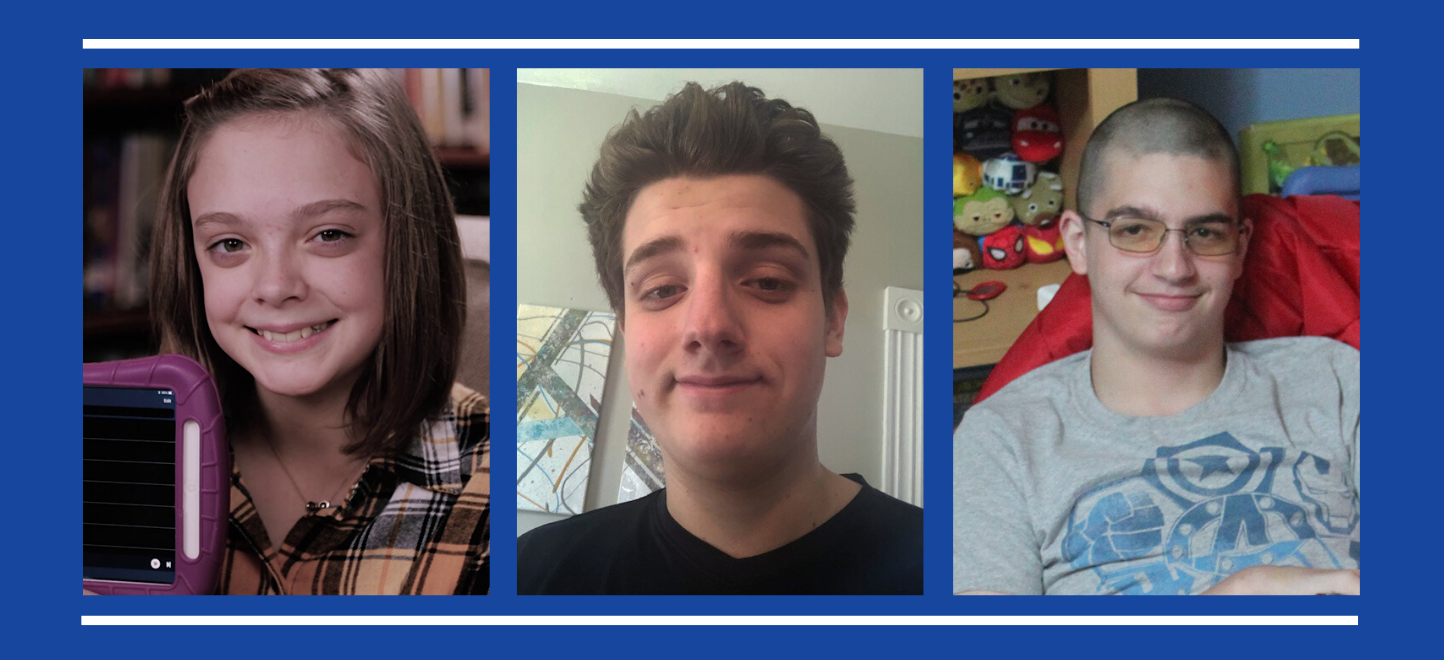Students leverage a variety of instructional delivery platforms, assistive technology solutions, and personal coping strategies to make distance learning work for them
Across the country we hear stories of teachers and students grappling with the demands of the virtual classroom. For the 7 million students in the US who receive special education services, the challenges are even more acute. In-person instruction and continuous 1:1 support are critical. The shift to online learning raises red flags and questions about not only how to provide similar support, but IF that support can still be provided via distance learning.
While alarming stories of struggling students abound in the news, there are rays of hope. See how three students with dyslexia are making homeschooling work with their learning differences. From Google Classroom and Microsoft Teams, to the dedicated support from teachers and insight into their own needs, these students are impressive.
Eli is a tenth grader in Maine who has dyslexia. He misses the social interaction with his friends, but he is keeping up with schoolwork.
- Instructional delivery: Eli says his teachers post videos that explain the lessons for the week. He is an auditory learning so video with narration suits his learning style.
- Assistive Technology: Eli uses Read&Write from TextHelp which is a free Google Chrome extension that overlays on top of Bookshare. He also uses Bookshare Web Reader and voice typing.
- Self-care: Eli prefers to spread his schoolwork out, jump on his trampoline, and play piano and video games.
Emery is a seventh grader in Texas who was diagnosed with dyslexia in second grade. She is talkative and outgoing and has learned to advocate for herself in school. How does she make distance learning work?
- Instructional delivery: Emery’s school has used Google Classroom for a long time so that made transition easy for her. She likes how her math teacher posts videos with step-by-step instructions and holds office hours so she can ask for additional help.
- Assistive Technology: Emery uses a Chromebook with accessibility settings like text-to-speech narration with highlighting. She creates digital vocabulary cards and uploads them to Voice Dream Reader which reads them to her. She also listens to The Outsiders in Bookshare using Voice Dream Reader and Dolphin EasyReader and enjoys choosing a voice that matches the way she hears the book in her head.
- Self-care: Emery joins Zoom meetings with her swim team, does workouts in her garage, and tries to relax.
Ryan was diagnosed with dyslexia in fifth grade and considers himself an extreme auditory learner. His school developed a new IEP for distance learning and called him to make sure the accommodations were being met.
- Instructional delivery: Ryan’s school uses Microsoft Teams, and he appreciates how his teachers grade his work, return it to him, and he can correct the errors, resubmit the assignment, and improve his score.
- Assistive Technology: Ryan uses Immersive Reader in Microsoft Word to read documents his teacher posts to Teams. He also uses his iPhone to listen to books he downloads from Bookshare. To Kill a Mockingbird is his current assigned reading.
- Self-care strategy: Ryan enjoys watching Star Trek, playing piano, and listening to audiobooks while woodcarving
Final Thoughts from Students
Students are resilient and full of surprises. Given the right tools, support, and perspective, it is amazing what they can accomplish even in this challenging educational landscape. We hope you will be encouraged to share these tips with your child or students who may also be struggling with school closures. We applaud the teachers, parents, guardians, and students who are finding creative and resourceful ways to continue education under circumstances that no one was prepared for.
Bookshare Can Help
Students need all the help they can get during this difficult time including having the books they need at their fingertips. Bookshare is a free ebook library for students with reading barriers like dyslexia, blindness or cerebral palsy. Kids can read over 800,000 books on whatever device they have at home. Learn more and sign up today.


Be First to Comment